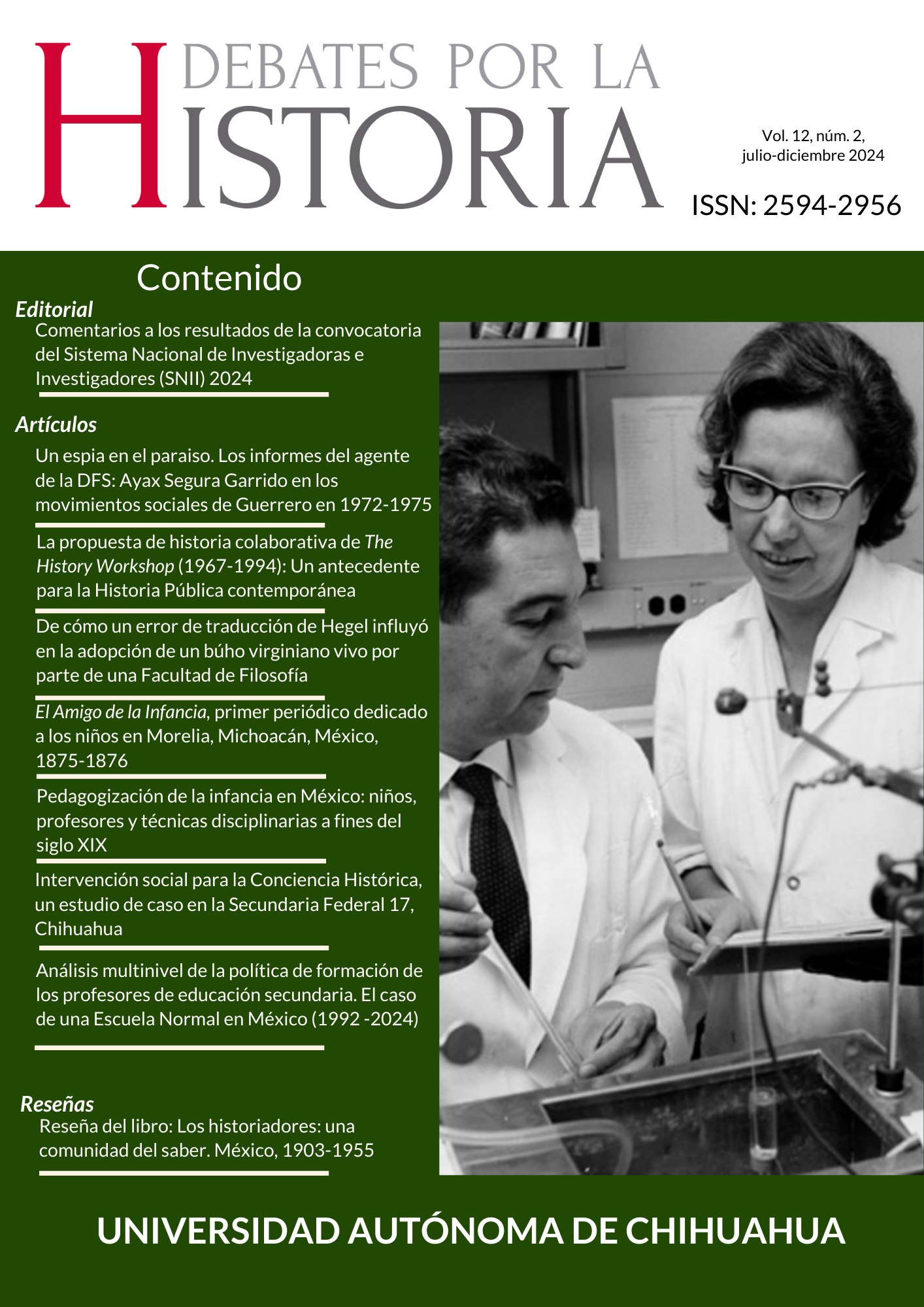Abstract
This theoretical article explores the series of events that led from the goddess Athena’s selection of a nocturnal bird of prey as her symbol to the adoption of a live Virginian owl by a School of Philosophy and Letters. A literature review was carried out, including some scientific documents and various sources of dissemination, since several of the topics investigated have not been treated scientifically, thus achieving a conceptual approximation that documents a series of fortuitous events that have gradually evolved, thanks to the intervention of various figures from the intellectual and artistic world, to shape the current concept of the owl and what it represents. The experiences narrated describe a continuous dialogue of knowledge between various themes and disciplines such as institutional image, falconry, philosophy and sustainability. It is concluded that this experience in choosing the owl as the image of an educational institution, the reasoning of the creators of its shield and the adoption of a live mascot, helped the students of the Faculty of Philosophy, who are eminently humanistic, to become interested and involved in other knowledge that is more traditionally addressed by the hard sciences, clearly contributing to the search, integration and appropriation of knowledge from various disciplines.
References
marcas (2022). Hooters Logo. https://1000marcas.net/hooters-logo
Almodóvar, J. (2019). Las aves en la mitología grecorromana [Ponencia]. Actas del XXV Congreso Nacional y XVI Congreso Iberoamericano de Historia de la Veterinaria. Ilustre Colegio de Veterinarios de Toledo, España. https://dialnet.unirioja.es/servlet/articulo?codigo=7638558
Alto Nivel (2022). La historia de Sanborns: ¿Qué significa su nombre y por qué hay 3 búhos o tecolotes en su Logo? https://www.altonivel.com.mx/empresas/emprendedor/la-historia-de-sanborns-que-significa-su-nombre-y-por-que-hay-3-buhos-o-tecolotes-en-su-logo
Cajas, A. (2010). Las aves de los mayas prehispánicos. https://www.maya-archaeology.org/FLAAR_Reports_on_Mayan_archaeology_Iconography_publications_books_articles/17_Mayas_arte_plumario_prehispanico_aves_mitologicas_celestial_moan_buhos_lechuzas_comercio.pdf
CONABIO [Consejo Nacional de la Biodiversidad]. (s.f.). Aves en la Cultura. http://www.conabio.gob.mx/otros/nabci/doctos/aves_cultura.html
Delgado, G. (2014, 5 de marzo). 3 grandes ventajas de usar la imagen de animales en tu marca. https://www.puromarketing.com/3/19401/grandes-ventajas-usar-imagen-animales-marca
Domènech, S. (1997). Las Mascotas en los Juegos de la Olimpiada, indispensables desde su aparición. https://core.ac.uk/reader/13282850
Enedelate (2010). La lechuza de Minerva. http://enedelate.blogspot.com/2010/03/la-lechuza-de-minerva_30.html
FFyL [Facultad de Filosofía y Letras]. (2022, 16 de julio). ¡Hasta siempre amigo Ozzy! [Video]. YouTube. https://www.youtube.com/watch?v=0Q2ZdAW8xOU
Gallegos Méndez, A., y Pérez Rivas, J. A. (2017). De sacrificios, fantasmas y apariciones: el miedo en la cultura nahua II. https://blogs.acatlan.unam.mx/scronicas/2017/07/15/de-sacrificios-fantasmas-y-apariciones-el-miedo-en-la-cultura-nahua-ii
Hegel, G. F. (1968). Filosofía del Derecho (ed. 5). Editorial Claridad. http://upcndigital.org/~ciper/biblioteca/Filosofia%20moderna/Hegel%20-%20Filosofia%20del%20Derecho.pdf
Hernández, M. (1992). Rehabilitación de aves de presa y conservación: aspectos veterinarios. Ardeola, International Journal of Ornitology, 39(2), 49-64. https://www.ardeola.org/es/volumenes/392/articulos/49-64/
Lechuza. (s.f.). La «lechuza de Minerva» frente al supuesto «búho de Minerva». https://www.lechuza.org/zoo/buhono.htm
López, R., y Núñez, M. (2018, 6 de junio). El Puma, emblema de la Universidad. https://unamglobal.unam.mx/global_revista/el-puma-emblema-de-la-universidad/
Mentepost. (2017). El Poli invita a votar por el nombre del burrito blanco del IPN. https://mentepost.com/2017/07/17/poli-invita-votar-nombre-del-burrito-blanco-del-ipn/amp/
Osbourne, O., y Ayres, C. (2017). I am Ozzy. Little, Brown Book Group. https://api.boekenbank.be/sample_content/9789/048/839/9789048839711.pdf
Rodríguez-Noriega, L. (2006). Intentando socavar una falsa creencia: la identidad del ave de Atenea. Stvdium Revista de Humanidades, 12, 103-111. https://dialnet.unirioja.es/descarga/articulo/2541986.pdf
Servicios de Relaciones Internacionales (2016, 20 de octubre). Las mascotas y la imagen institucional [Video]. YouTube. https://www.youtube.com/watch?v=k47ytIsVbwo
Stymacks, A. (2018, 20 de marzo). Por qué los cuervos son las aves más inteligentes del planeta. National Geographic. https://www.nationalgeographic.es/animales/2018/03/por-que-los-cuervos-son-las-aves-mas-inteligentes-del-planeta
UACH [Universidad Autónoma de Chihuahua]. (2022). Escudo de la Facultad de Filosofía y Letras. https://uach.mx/assets/media/publications/2022/11/4167_simbolos-universitarios/ffyl-escudo.pdf
Vargas, J., Granados, M., Hinojos, E. P., y Aragón, F. (2018). Licenciatura en Lengua Inglesa. El Humanista Digital. https://www.elhumanista.net/fernanda/licenciatura-en-lengua-inglesa-2/

This work is licensed under a Creative Commons Attribution-NonCommercial 4.0 International License.
Copyright (c) 2024 Fidel Gonzalez-Quiñones, Ivonne Medina-Chávez


